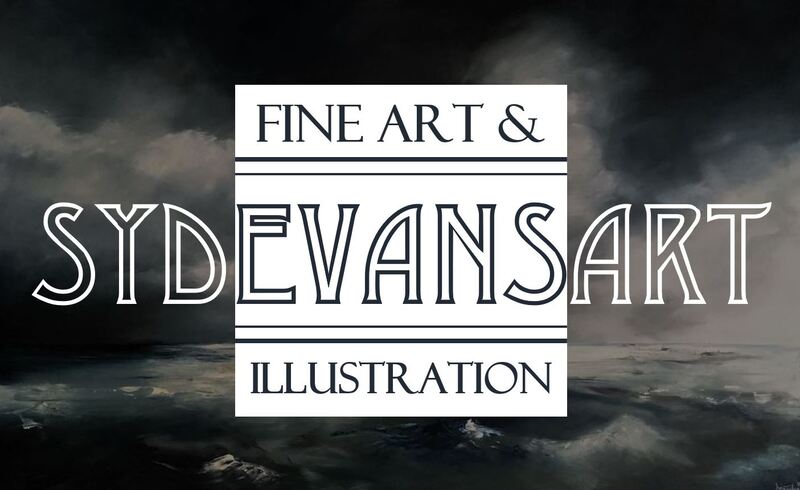About The Artist
Some of you may know me under the name "SevanSeas". It was meant to be a playful combination of my name, Sydney Evans, and the phrase "sail the seven seas", which was a nod to where I started with my seascape paintings.
After 5 or so years of trying to explain to people how to find my shop online ("SevanSeas... Oh like my name 'S Evans' plus ... 'seas'... No with an 'a' instead of an 'e'..."), I decided to forsake clever puns and go with what I've got.
I would say I'm primarily recognized for my moody, large scale coastal art in hues of deep blues, greens, and cool grays. Especially my ocean storm clouds. My memories of growing up in the Tidewater area of Virginia and vacationing in the Outer Banks of North Carolina strongly influence my subjects and style.
However, I decided a long time ago I wasn't going to limit myself simply for the sake of a brand! Since starting my business, I've branched out into ink and watercolor illustration, portraits, wildlife, and anything that piques my interest. As of 2023 that includes fiber arts and polymer clay sculpting!
I credit my love of painting and drawing to my grandmother, Sandra Cowley. We still do festivals and shows together yearly.
Everything in my shop is painted and printed and packed from my home studio.
After 5 or so years of trying to explain to people how to find my shop online ("SevanSeas... Oh like my name 'S Evans' plus ... 'seas'... No with an 'a' instead of an 'e'..."), I decided to forsake clever puns and go with what I've got.
I would say I'm primarily recognized for my moody, large scale coastal art in hues of deep blues, greens, and cool grays. Especially my ocean storm clouds. My memories of growing up in the Tidewater area of Virginia and vacationing in the Outer Banks of North Carolina strongly influence my subjects and style.
However, I decided a long time ago I wasn't going to limit myself simply for the sake of a brand! Since starting my business, I've branched out into ink and watercolor illustration, portraits, wildlife, and anything that piques my interest. As of 2023 that includes fiber arts and polymer clay sculpting!
I credit my love of painting and drawing to my grandmother, Sandra Cowley. We still do festivals and shows together yearly.
Everything in my shop is painted and printed and packed from my home studio.

